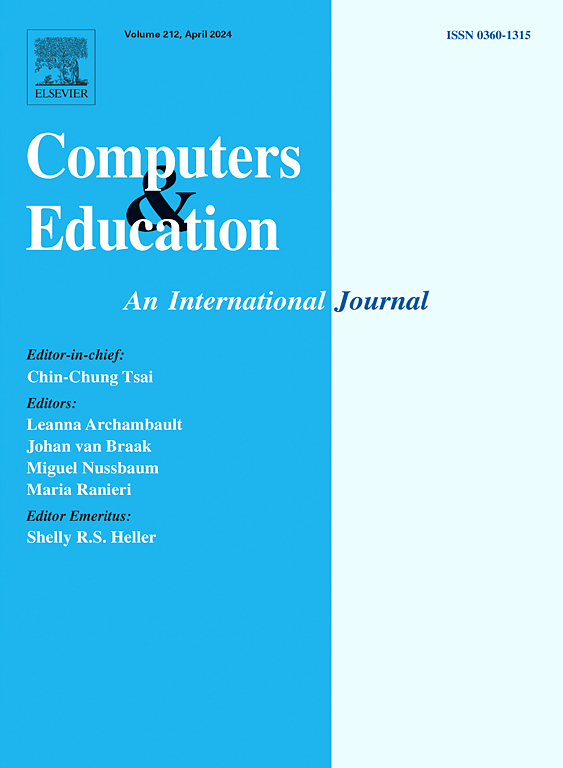儿童如何向机器人学习:儿童-机器人互动中交流风格和性别的教育意义
IF 10.5
1区 教育学
Q1 COMPUTER SCIENCE, INTERDISCIPLINARY APPLICATIONS
引用次数: 0
摘要
本研究考察了小学生在受控的教育互动中对人形机器人的交流方式和感知性别的反应。共有251名儿童(年龄在7-12岁之间)与一个机器人互动,机器人被编程为使用礼貌的询问方式或坚定的命令方式,并呈现出女性或男性角色。我们调查了儿童是否会模仿机器人的风格(H1),以及儿童的年龄和性别是否会预测他们将机器人拟人化的倾向(H2-H3)。结果显示,与有礼貌的机器人互动的孩子们几乎总是有礼貌地回应,而那些遇到一个发号施令的机器人的孩子们仍然绝大多数以礼貌的方式回应,而不是模仿它的语气。年龄较小的儿童和女孩对机器人的拟人化程度明显更高。与预期相反(H4),模仿程度与拟人化无关。方差分析(H5)表明,机器人的角色(性别×沟通方式)影响拟人化:礼貌女性机器人的拟人化得分最高,尽管事后差异不显著。回归分析(H6)证实儿童年龄和性别是人格化的重要预测因素。这些发现强调了社会线索在儿童-机器人教育互动中的重要性。根据儿童的发展水平和社会期望定制机器人的交流方式可以提高儿童的参与度,并可能支持积极的学习成果。本文章由计算机程序翻译,如有差异,请以英文原文为准。
How children learn from robots: Educational implications of communicative style and gender in child–robot interaction
This study examined how primary school children respond to the communicative style and perceived gender of a humanoid robot during a controlled educational interaction. A total of 251 children (ages 7–12) interacted with a robot programmed to use either a polite asking style or a firm commanding style, and presented with either a female or male persona. We investigated whether children would imitate the robot's style (H1), and whether child age and gender would predict their tendency to anthropomorphize the robot (H2–H3). Results showed that children interacting with a polite robot almost always responded politely, whereas those encountering a commanding robot still overwhelmingly responded in a polite manner rather than mirroring its tone. Younger children and girls displayed significantly higher levels of anthropomorphization of the robot. Contrary to expectations (H4), the degree of imitation did not correlate with anthropomorphism. An ANOVA (H5) indicated that the robot's persona (gender × communication style) influenced anthropomorphism: the polite-female robot elicited the highest anthropomorphism scores, though post-hoc differences were nonsignificant. A regression analysis (H6) confirmed child age and gender as significant predictors of anthropomorphization. These findings underscore the importance of social cues in child–robot educational interactions. Tailoring a robot's communication style to children's developmental level and social expectations can enhance children's engagement and potentially support positive learning outcomes.
求助全文
通过发布文献求助,成功后即可免费获取论文全文。
去求助
来源期刊

Computers & Education
工程技术-计算机:跨学科应用
CiteScore
27.10
自引率
5.80%
发文量
204
审稿时长
42 days
期刊介绍:
Computers & Education seeks to advance understanding of how digital technology can improve education by publishing high-quality research that expands both theory and practice. The journal welcomes research papers exploring the pedagogical applications of digital technology, with a focus broad enough to appeal to the wider education community.
 求助内容:
求助内容: 应助结果提醒方式:
应助结果提醒方式:


